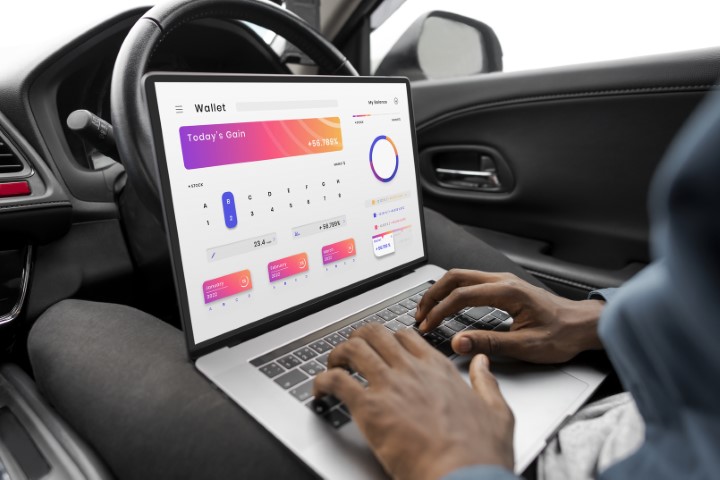 Between 2018 and 2019, the trends in the automotive industry faced multiple challenges, from tightening lending standards and growing competition to slowdown in economic growth, especially in emerging economies such as South Africa, China, India, and Russia.
Between 2018 and 2019, the trends in the automotive industry faced multiple challenges, from tightening lending standards and growing competition to slowdown in economic growth, especially in emerging economies such as South Africa, China, India, and Russia.
And then came Covid-19 and triggered one of the world’s deepest recessions in nearly a century. Lockdowns and travel restrictions further dampened demand and drove car sales down to historic lows.
Despite the gloom, however, the trends in the automotive industry is reviving and already in recovery phase in 2021. Let us have a look at some of the trends leading this year and how the automobile industry has adjusted to new realities.
- Online Purchase of Cars on the Rise
Customers have increasingly switched to digital purchases since the pandemic started. The 2021 Motus report shows that nearly 30 percent of new vehicle sales in the U.S. were completed online in 2020. The majority of new car shoppers (71 percent) report they are satisfied with their buying experience.
Due to this shift to digital, automobile salespeople may consider transitioning to new roles such as product specialists and consultants while car dealerships may have to rely more heavily on online channels for traffic and sales.
- Autonomous Vehicles
The global pandemic is likely to have a significant impact on the deployment of autonomous vehicles in public transit. Many transport agencies have already installed safety features such as panels substituting onboard payment and rear-door boarding. And as we have shifted to remote work and home-based living, the need to move products safely has become more important than ever. Automotive vehicles are set to change the way packages are delivered to our mailboxes, meals to our front door, and products from warehouses to retailers.
- Artificial Intelligence
Computer vision and deep learning and machine learning have multiple applications in automation. AI technologies assist drivers and help manage fleets, improve safety, and speed up vehicle damage assessments.
Robotic solutions and systems based on conversational interfaces, natural language processing, and computer vision are increasingly used in vehicle manufacturing. Collaborative robots, for example, help with monotonous tasks such as inspecting finished parts, machine tending, handling materials, and packing products.
Vehicle manufacturers also use AI technologies to track components from loading to arrival at the final destination. They also use artificial intelligence to improve inventory visibility and predict changes in demand.
Additionally, AI-enabled platforms are used for predictive maintenance based on sensor data. Examples of common in-vehicle sensors are fuel, ultrasonic, radar, pressure, infrared, inertial, and exhaust gas sensors.
- Use of Hard Steels
In 2021, more and more manufacturers opt for harder steels with smooth surface finishes. The use of harder steel helps reduce wear and tear and increases vehicle life expectancy. As grinding is more difficult, superabrasive diamond wheels are used to grind hard surfaces and satisfy finish requirements such as straightness and roughness.
- Car Subscription Services
Vehicle subscriptions have become popular with consumers as they have more flexible and shorter terms than leases. They offer customers the chance to drive expensive, luxurious vehicles without having to worry about maintenance. A further advantage of car subscription services is that users pay a monthly fee that covers roadside assistance, insurance, and taxes.
- Connected Vehicles
A big focus for car manufacturers in 2021 will be connected vehicle technology. Utilizing IoT solutions, connected trains, buses, trucks, and cars receive near real-time traffic and safety information and communicate with road infrastructure such as school zones, toll booths, work zones, and traffic signals. Vehicle-to-vehicle communications make use of short-range devices to communicate messages about the vehicle’s brake status, heading, and speed.
Connected vehicles also utilize multiple applications. Dynamic speed harmonization applications improve traffic performance by adjusting recommended speeds in response to weather conditions, incidents, and diminishing or developing congestions. Que warning applications provide information about impending and existing queues while weather responsive traffic management systems use weather and traffic fata to aid the operation of ramp meters, traffic signals, and variable speed limits during adverse weather.
2021 could also bring a change in how vehicles, passengers, and drivers interface, thus improving safety on the road. Some automobile manufacturers have already introduced contactless features such as gesture and voice control. Others are experimenting with health tracking and driver monitoring systems to improve driver comfort and safety.
The Vehicle of the Future
The vehicle of the future will be connected, shared, autonomous, electrified, and more affordable. The significant advances made in areas such as deep neural networks, machine learning, and artificial intelligence have revolutionized the trends in the automotive industry, from how vehicles are manufactured to how they operate on the road.
From the customer’s perspective, rapid technological change offers multiple benefits. In the near future, driving will become more comfortable, safer, easier, greener, and cheaper. Full automation will reduce congestion, traffic accidents, and dangerous and risky driver behaviors and will improve reliability, efficiency, and convenience.
Vehicles will be able to exchange information with the outside world, from accidents and heavy traffic to service stations, vehicle condition, and weather. Offering access to entertainment, media, cloud, augmented reality, and Wi-Fi, the vehicle of the future is also the next entertainment and service consumption frontier.










